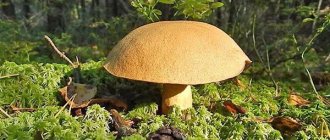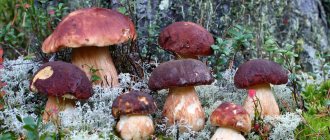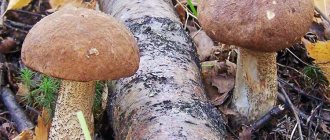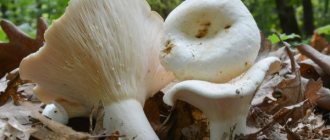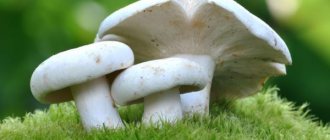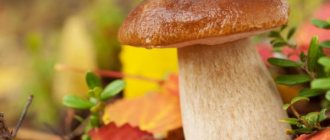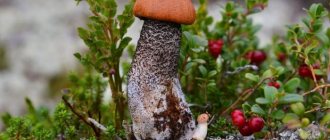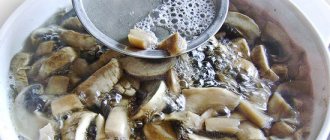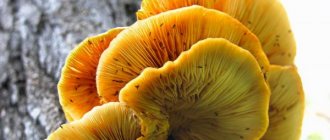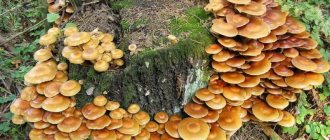The benefits and harms of tree mushrooms
The benefits of edible species of tree mushrooms are scientifically proven. They contain absolutely no fat. Their main useful components are:
- vegetable protein;
- vitamins C, B, especially a lot of B3;
- Microelements calcium, phosphorus, iron.
In such types of mushrooms as tinder fungus, shiitake, chaga, it is not culinary, but pharmaceutical properties that predominate. Various substances and mixtures are prepared from them that can treat the symptoms of certain diseases:
- lack of iron in the blood;
- high blood pressure;
- high levels of stomach acidity;
- reduced immunity.
Tree fungi can be considered harmful only because they spread widely and quickly on healthy trees in human-cultivated areas - gardens, parks, artificial forests. Once on the bark of a damaged area of a healthy trunk, fungal spores quickly multiply and destroy it in just a few years.
If wood damaged by animals or frostbitten is treated in time with garden varnish, this danger will disappear.
Cultivation at home
Growing mushrooms at home on stumps is carried out for two purposes:
- Utilitarian: edibles are used for consumption. This is how entire mushroom plantations are grown in the basement or in the garden.
- Decorative: decorating fruit trees or gardens. People decorate their dachas with bright fruiting bodies: some types of tinder fungus are suitable for such purposes.
The search for suitable stumps is carried out in the forest or by cutting down dried trees. Some species take root equally well on all types of wood, while others are more demanding on the substrate. Growing on a large scale requires the following:
- Suitable place for sowing, high-quality mycelium.
- Temperature and light conditions.
- Regular treatment and replacement of stumps or other substrate. The fruiting bodies completely destroy the wood in 6-8 years.
If mushrooms are grown on your own plot, they will be tasty, environmentally friendly, and have healing properties.
Mushrooms that grow on trees and stumps are either edible or unsuitable for food. They use wood as a nutrient substrate. Some types of such fungi are parasitic, violating the integrity of living tissues; others process dead wood and become food for birds and animals. Medicinal compositions are prepared from some types of tree mushrooms.
Types of mushrooms
Of the large number of edible species, honey mushrooms. There are 4 main ones, most often collected by mushroom pickers.
Summer honey fungus
An edible mushroom that grows in large colonies, mainly on rotten and damaged wood in deciduous forests. The cap of this species is brown and becomes transparent after rain.
Honey mushrooms have caps with a diameter of 3-8 mm, the center is lighter than the edges. Honey fungus is up to 9 cm high, the leg is light with a ring, over time only a strip remains of it. Below the ring is a leg with scales.
The first mushrooms can be found starting in June and they bear fruit until the end of August.
Meadow honey fungus
These honey mushrooms have a high stalk up to 10 cm, yellowish color with a white coating, dense in length, slightly widened downwards. Over time, the leg thickens.
The cap sizes are from 3 to 7 mm in diameter, light yellow in color, becoming yellowish-brown in wet weather. The edges of the cap are lighter than the center. Below there are light, sparse plates.
They begin to bear fruit from June until autumn frosts.
Mushrooms can be found in meadows, fields, summer cottages, ravines and forest edges. Honey mushrooms grow in arched rows.
Autumn honey mushrooms
A popular type of mushroom, it is distinguished by its large size. A mushroom on a stalk 8-10 cm long with a slight thickening at the very bottom. The thickness of the stem is up to 2 cm. You can see a pronounced ring under the cap itself.
The hats are large, on average 3-10 cm (sometimes up to 15-17 cm). The plates are light yellow, rare.
Young honey mushrooms are covered with scales on the surface. The color of the cap depends on the type of trees on which the mushrooms grow - from light to brown colors.
Honey mushrooms begin to bear fruit from the end of August and end in October.
Winter mushrooms
Honey mushrooms can be found on damaged and old deciduous trees, mainly poplars and willows.
The leg is 2-7 cm high, up to 1 cm thick, velvety brown.
There is no ring under the cap on the stem. The cap reaches a diameter of up to 10 cm, from yellow to brownish-orange in color. The plates are white and sparse. The pulp is white or yellowish.
Honey mushrooms can be found in thawed patches and even under snow, from autumn to spring.
Return to contents
Wild oyster mushrooms
The description of these large and very tasty mushrooms is familiar to novice lovers of quiet hunting more from trips to the store than from walks in the forest. The product is produced on an industrial scale for markets and supermarkets; many are grown in basements and garages. However, oyster mushrooms grow on stumps in the forest.
They produce the product on an industrial scale for markets and supermarkets, many grow them in basements and garages
There are several types of such mushrooms:
- Horn-shaped oyster mushroom. The cap is cream or white, the leg is curved, the plates extend almost to the edge of the leg. Grows in deciduous forests, prefers oak and rowan stumps.
- Orange. It grows in October-November only on rotten stumps in dead wood. It is frost-resistant, but the pulp is tasteless: it has a watery structure and a putrid odor. It is not poisonous; in some areas of central Russia, young specimens are eaten.
- Oyster, or ordinary. The most popular and delicious oyster mushrooms. Brown, dark gray, light olive. They grow densely. As they grow, the caps of these mushrooms become lighter. Very resistant to cold. They bear fruit even after the first frost.
- Pulmonary. Prefers coniferous forests. Outwardly similar to ordinary, but has more torn and smooth edges. The taste is bland, not very pronounced, and requires seasonings and spices when cooking.
Also read: Lacteal mushrooms: description of species, places and collection rules
general characteristics
About 200 species of mushrooms grow in the forests of our country, but only 40 species of them can be eaten by humans. The energy value of the product is low, about 300-500 calories per 1 kg. The chemical composition of the fungus is close to vegetable crops, despite the fact that the set of amino acids is similar to products of animal origin.
What mushrooms grow under pine trees? These are porcini mushrooms, saffron milk caps, pig mushrooms, russula, Polish mushrooms, boletus mushrooms, green mushrooms, mokrukha and fly agaric mushrooms. In spruce forests you can find porcini mushrooms, butterfly mushrooms, spruce mushrooms, garlic mushrooms, forest champignons, puffballs and yellow milk mushrooms.
Tiger Sawfoil
The description is similar to porcini mushrooms, which bear fruit in May. The color of the cap matches the color of the white champignon. Features of sawfoil:
- Its cap tapers downward, looks like an inverted umbrella, and merges with the stem.
- There is a depression in the middle of the cap, like chanterelles.
- The edges of the cap are wavy.
The synonymous “tiger” species was named because of its color: dark gray stripes stand out on white. The species does not have poisonous counterparts, but it itself has low nutritional value. The first specimens appear in May, fruiting ends in November.
It is recommended to eat only the boiled caps of young individuals, because their legs are somewhat harsh.
TOP 5 interesting facts about tree mushrooms
Edible species that parasitize plants are used in the preparation of salads and main dishes. They are pickled and salted, eaten stewed and fried, and added to snacks and delicacies in Korean and Chinese. Heat treatment is required before use. Energy value (calorie content) – 14-25 kcal.
Interesting facts worth noting:
- Crafts made from wood mushroom. From the hard pulp of some species they make figurines, jewelry (pendants, pendants), and make original lamps and lighting fixtures.
- Ability to bear fruit on wet sawdust, straw or cellulose. This feature allows you to grow some varieties in summer cottages.
- Increases with soaking. Tree mushrooms are small in size when dried, but when placed in water they expand several times in size.
- Taste of seafood. Species growing on trees differ in taste characteristics from classic mushrooms.
- Unique chemical composition. Many species have healing properties for the body and improve mental activity. They are used as part of low-calorie diets for weight loss, in the treatment of allergies, gastritis, oncology, diabetes and other diseases.
Useful types can be purchased in pharmacies in dry form. They are also included in a number of preparations for internal use and external application. In stores they are sold in pressed form (packaging briquettes).
Important! The benefits and harms of tree mushrooms depend on the correct method of preparation and compliance with contraindications. Store them dried in a cool, dry place to prevent the formation of mold.
When is the best time to collect forest honey mushrooms?
Beginning mushroom pickers are interested in the question, when is the best time to collect hemp mushrooms? Knowing this, the quality of the mushroom harvest and its volume will always be 5+. Note that the season for collecting these mushrooms will depend on the type of honey mushrooms and weather conditions. For example, autumn honey mushrooms grow from mid-August to mid-November, summer honey mushrooms - from mid-April to October, and winter honey mushrooms - from late October to March.
To generalize, the peak for collecting hemp mushrooms occurs in the autumn months, especially September and October. See a photo showing autumn hemp mushrooms in the forest:
Forest orderlies and pests
Here is a man walking through the forest and carefully examining the ground under his feet. There are a large variety of edible and poisonous mushrooms. But if you look a little higher, you will notice that some mushroom families prefer wood rather than soil. Moreover, both living trees and dead stumps, dead wood and dead wood.
Mushrooms on stumps and dead wood, for example, perform the function of orderlies. Their mycelium actively develops and feeds inside woody debris. Gradually, although very slowly, the dead wood is destroyed, freeing up the ground for new growth.
In addition to useful orderlies, there are mushrooms in the forest that settle on living trees. Spores penetrate inside through damage in the bark or roots and gradually destroy the tree, destroying it from the inside and taking away nutritious juices. These mushrooms harm forest areas.
Reasons for the growth of mushrooms on tree stumps
Individuals settling in this way are classified as saprophytic fungi that feed on the remains of various microorganisms. They parasitize on the body of a stump or living tree, destroying the wood. Fungal spores spread in areas of damage, forming mycelium, which allows the fungi to go deeper into the wood, affecting it.
Causes of mushrooms on stumps:
- Mechanical damage (cutting, breaking).
- Irregular garden care.
- Pest damage to trees.
- Special colonization of fungal spores on stumps or trees for the purpose of growing edible species.
Wood-destroying edible mushrooms grown in households or on large farms (honey mushrooms, oyster mushrooms, shiitake mushrooms) have become a source of good profit in modern business.
Poisonous wood-destroying organisms cause irreparable damage to fruit trees, leading to their death and contamination of the entire garden. Therefore, trees affected by such parasites should be uprooted and destroyed in a timely manner to prevent the spread of fungal spores to other plants.
What mushrooms grow on stumps?
- The well-known mushrooms, which are popularly called honey mushrooms, grow on stumps. These are red and yellow-red mushrooms. These mushrooms are included in the category of edible mushrooms; they can be fried, boiled, or pickled without fear. The mycelium of mushrooms is located on fairly old stumps of coniferous trees - these are spruce and pine.
- Another well-known mushroom that also grows on a stump is oyster mushroom. The most favorable conditions for development are created by the stumps of trees such as linden, maple, elm, and aspen. You can harvest oyster mushrooms in the fall, from mid-September to the end of October. Mushrooms grow in large “families” of several dozen pieces. Oyster mushrooms can be eaten, but only when the mushroom is young. Overripe oyster mushrooms can cause serious poisoning, as microorganisms that are poisonous to humans begin to develop in them.
- Mature stumps of deciduous trees are ideal for the active growth and reproduction of fungi such as tiger sawfoil. The best time to harvest such a mushroom harvest is from mid-June to the end of October. Young mushrooms have excellent taste and can be eaten either boiled or fried.
INEDIBLE mushrooms. Caution INEDIBLE mushrooms
We continue the mushroom theme during the season.
If you have long wanted to go mushroom picking, but didn’t understand it well enough, my article will help you. Click on the blue link and read 
So the most famous inedible mushroom is, of course, fly agaric. You can easily recognize it by its red cap with spots.
fly agaric
It doesn't only come in red.
Meet the panther fly agaric
fly agaric
As you can see, the colors are different, but everyone has spots on the cap.
Bile mushroom
Gall fungus is also called false white fungus. He looks just as strong. And it can be similar to boletus and boletus. You can distinguish them by the dark pattern on the leg. And when broken, the flesh turns pink. The porcini mushroom remains white.
To make sure that it is a gall mushroom, you need to lightly lick the bottom of the cap - it will be bitter
gall mushroom
gall mushroom
white on the left, gall mushroom on the right
False chanterelles. They are distinguished by a brighter color and the presence of a spot on the cap; the edge of the cap is lighter. In general, the color is not uniform, as in normal ones. False ones contain more toxins than regular ones. You can eat them, but you need to soak them for a couple of days for them to come out. I think it’s better not to take risks, but to look for good chanterelles 
orange false chanterelles
false chanterelles
And finally, false honey mushrooms.
The main feature is the presence of a ring-shaped skirt under the hat. False honey mushrooms do not have a ring.
false honey mushrooms. No ring
ordinary honey mushrooms
Real honey mushrooms smell very pleasant. False ones are more moldy. Also pay attention to the scales on the cap. False ones will have a smooth cap.
Other tree mushrooms
Species that are rare or have an unusual appearance deserve special attention.
Trembling fucus
On the territory of Russia it is found only in the Primorsky Territory; it is also called the “silver mushroom”. This is an edible species. Peculiarities:
- the pulp has a translucent gelatinous structure;
- The body shape is sinuous, distinguished by the presence of folds.
Lives on rotten or damp deciduous trees.
Crested hedgehog
It looks like hanging thin milky needles. Other names:
- grandfather's beard;
- bearded mushroom;
- bearded man
Found in the Caucasus, Far East, Crimea, and Amur region.
Reference! The combed hedgehog is listed in the Red Book of the Primorsky Territory.
Reishi (lingzhi)
It is not an edible tree mushroom, but due to its beneficial properties it is used in medicines and traditional medicine recipes. It has another name - varnished tinder fungus.
Description:
- a dense, low leg goes into a shiny cap with a wavy surface; it has dark rings;
- the color can be yellow-black, orange or red.
More often found on deciduous trees.
Liverwort
The name is due to its exotic appearance:
- the pulp is characterized by density and meatiness;
- has a bloody tint on the cut, reminiscent of liver.
Grows mainly on deciduous trees.
Japanese forest mushroom
Other names: shiitake, kombucha. Culinary and medicinal uses come from Japan and China. Outwardly it is similar to meadow champignon:
- brown umbrella-shaped cap with light plates;
- the leg is fibrous, with a scaly surface.
It is distinguished by its fleshy pulp.
Kalocera adhesive
Grows extensively on rotten wood. Peculiarities:
- resembles bright yellow or orange coral;
- the horn-like processes are fused at the base.
It feels like rubber to the touch.
Askokorine meat
More often found on birch stumps. Description:
- outwardly resembles pieces of meat of a pinkish-purple hue;
- plates measuring about 1 cm are united above the base.
It is an inedible mushroom due to its unsightly appearance and lack of distinct aroma.
Black Chinese mushroom
It has other names - muer, ear of Judas, auricularia ear-shaped, fungus. A rare mushroom that is medicinal. Peculiarities:
- has the shape of an auricle, brown in color with a silky surface;
- The pulp is tender with a jelly-like structure.
Often found in China and the Far East.
Dacrimitses
A rare species, it bears fruit in damp places on rotting stumps of coniferous trees. Description:
- the oval-shaped body is small (up to 0.5 cm), yellow in color;
- looks like frozen polyurethane foam;
- in dry weather it becomes flat.
It has no taste characteristics and is not used as food.
Exidia ferruginosa
It is of no value in cooking and has no distinct aroma. External characteristics:
- in appearance it resembles drops of black resin enveloping the entire trunk of the shoots;
- the pulp is jelly-like.
Changes shape depending on climatic conditions.
Gruzd
This family of mushrooms includes several species. These are bitter milk mushrooms or bitter mushrooms, black milk mushrooms or chernukha mushrooms. Prefers forest floors. It can grow in spruce and pine forests, birch groves and areas where there is hazel undergrowth.
The bitterberry cap usually does not exceed 8 cm, similar to a funnel, the stem is high, up to 10 cm, and up to 1.5 cm in diameter. The color of the cap and stem is the same, reddish-brown.
The cap of the chernuka can reach 20 cm in diameter and is olive-brown in color. The leg is not high - up to 6 cm, but fleshy - with a diameter of up to 2.5 cm.
Although these species fall under the category of what mushrooms grow under pine trees (photos are located in the article), they are still conditionally edible, that is, they require compliance with a certain preparation technology. The mushroom is pickled only after pre-soaking or cooking.
Volvariella, row and stag mushroom
A description of Volvariella is difficult to find even in some guides. This is because it is not popular among mushroom pickers in our country. In China, it is considered a delicious mushroom and is grown in special substrates. Three species of Volvariella grow in Russia, but only one is edible. This is Volvariella silky. Her hat is white, covered with light yellow fibers. Outwardly similar to a bell, in adult specimens it opens and becomes about 15 cm in diameter.
In China, it is considered a delicious mushroom and is grown in special substrates.
The red-yellow row looks like honey fungus. The color of the cap varies from pale pink to bright red, and the stem and plates are always yellow. This is a conditionally edible mushroom. It is not poisonous, but has poor taste and smells unpleasant when cooked. Some mushroom pickers advise pre-soaking the rows in cold salt water.
The cap of the deer mushroom is brown or gray-brown, the leg is long, white, the plates are pale pink. Grows in any type of forest, very drought-resistant. It is used for salting and pickling, and is pre-soaked.
Silent hunting is a favorite hobby of many Russians. To avoid unpleasant consequences, remember an important rule: if you’re not sure, don’t take it. If you have any doubts about whether the mushroom you find is edible, do not put it in the basket.
The effect of fungi on trees
All fungi growing on trees are parasites and have a negative effect on the condition of the tree. As a result of such relationships, trees die. If plants in the garden are affected, they must be disposed of immediately. Some gardeners believe that it is enough to cut out the affected branch and get rid of dry branches that have already died. But this is not enough, because fungal spores quickly spread and end up under the bark of trees. They can also be carried by the wind from one plant to another. Spores ripen in most species by early autumn. Damaged and dead branches must be destroyed before this time. Otherwise, the spores, once on the bark, form a mycelium from which mushrooms will grow. But not necessarily in the same year. The mycelium sometimes develops inside the trunk for 2-4 years.
The interaction between the affected tree and healthy plants should be minimized. Cut branches are burned. If you want to grow edible polypores or honey mushrooms, then it is better to grow them on stumps.
The exception is species growing nearby tree crops. During their growth, the root system of the tree is entwined with hyphae. It doesn't harm him. It shares carbon nutrition with the fungi, and in return receives water and minerals, which are well absorbed from the soil by hyphae. This type of relationship is called mycorrhiza. For them, plant residues are also a good source of food for another group of fungi - saprophytes.
We collect and prepare the sulfur-yellow tinder fungus, May 2021 Mushrooms growing on trees Mushrooms growing on trees Mushrooms on stumps Tinder The largest mushroom

